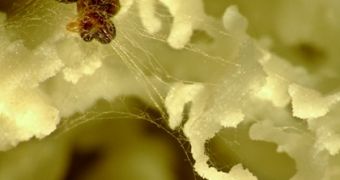Dirt might not seem like something all that worth researching, but pretty much every man or woman of science will disagree with you if you think that, and there's no need for 3D printing to figure that out.
However, it seems that 3D printing is necessary, or at least very helpful, for actually understanding what dirt is made of, and how its components interact.
That's what scientists, at Abertay University in Dundee, Scotland, led by Professor Wilfred Otten, feel.
They have combined X-ray Computed Tomography (CT scanning) and 3D printing to create 3D images of dirt clusters.
By inserting fungi and bacteria into the pores within 3D printed soil models, they can see how microorganisms move, interact and find food.
Much better than actually studying soil samples, which he likens to studying the rubble of a collapsed building, which would never be able to actually tell you what the building looked like before, what sort of structure it had, etc.
"Before X Ray CT scanning became available, soil samples were taken back to the lab and studied there," Otten said.
"But that's like studying the rubble of a collapsed building. You would never be able to tell what the structure of the building had been before it fell down, how many rooms it had, or how many people lived In or used it, and all the different things the different people used it for."
Otten hopes the research will eventually show what happens if we overuse soil, and what impact it can have on food security and climate change.
For now, though, they can only analyze a single species of microorganisms. In the future, they'll gradually add more complexity and food sources, until they replicate below-ground environments and conditions perfectly.
"3D printing is a major breakthrough for us, because we now have the ability to examine the structure of soil up close, to see how big the pore spaces within it are, how they are linked together, and how the bacteria move through them as we watch their progress in the lab," Otten said.

 14 DAY TRIAL //
14 DAY TRIAL // 